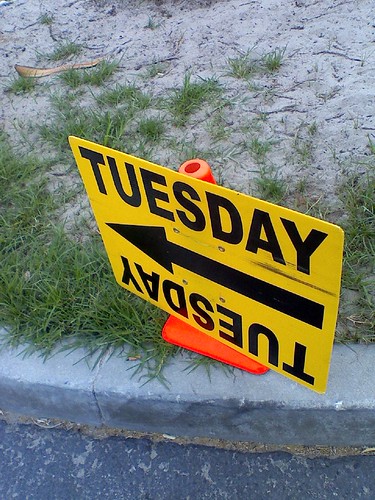Tuesday is writing day

Time management is important. I have found that i need to plan my days, and organize activities…. in that effort I have deemed Tuesday evening as my day to write. While i strive to blog something every day, Tuesday is the day i create my documents, articles for other blogs, and i do a Kids Newsletter for my church.
Tuesday evening, just after dinner and dishes i scurry to the computer, and close the door to the bedroom so that it is just me and my thoughts… no dogs, no sounds of tvs, and no husband while i write.
I have already spend sometime thinking and jotting down quick thoughts, doing some research on topics, and this is the time to pull it together. Depending on the subject, and comfort level I like to have music on in the background…. loud and pumping when i am at a loss for words, or soft and classical when i have my thoughts and just need to focus in.
Writing is an art that improves with care, and doing. The more you stretch yourself to write, and stay to the appointed task the better you will become. This blog exists as an exercise in improving my writing muscles… keeping them limber, and striving to learn as i go.
Writing is an art that is refined with practice and experience. Here are a few writing tips:
1. Begin with an outline – it is like the frame of the piece… what do you want to talk about and what points to you wish to cover? Think carefully what your objectives are, what is your subject? Are there different steps or components of the subject? Is there a conclusion, or application.
2. Add meat to the bones – for each point of your outline add your knowledge, or research findings… tell the story, fill in the key facts, details, and essential informaiton to tell the reader what they need to hear.
3. Formal writing requires formal style – if you are doing a term paper make sure to follow the proper style and be sure to indicate your sources in proper method. Always identify your sources, especially quotes and claims. Failure to do so might get you in deep waters.
4. Paint the picture. I love the comment attributed to Anton Chekov “Don’t tell me the moon is shining; show me the glint of light on broken glass.” Use your words like a brush to paint a picture, deepen the insight of the reader.
5. Know your audience – speak at their level. perhaps it is because i edit a kids newsletter that i am always conscious of not wanting to use words a 3rd grader would not know, my audience needs to connect with what i write. If your audience is highly educated adults – have at it – throw the $50 dictionary words in because they will understand.
6. Never presume that your writing is clear – always ask someone you trust to proof read and bring clarifying questions to you. Each profession seems to have its own sets of language and slang that may not be understood beyond that group. Avoid slang, or jargon that is specific to a certain group of people, or if you use it, explain it. You dont have to explain the word or phrase every time, but on the first use in your article of the phrase offer the explanation. Readers will then apply your definition to any further reference to it.
7. Write about something you want to know more about. When i started this blog i knew very little about soap making, and wanted to take on the concepts, understand the processes, watch them, learn and tell others. The same is true of my shibori. You do not have to be an expert to begin researching and writing about something. That is an outcome of your learning.
8. Review and make final edits – remove the boring things, the excess words. Great writing is often simple language, precisely phrased, pointed. Remove any excessive words,